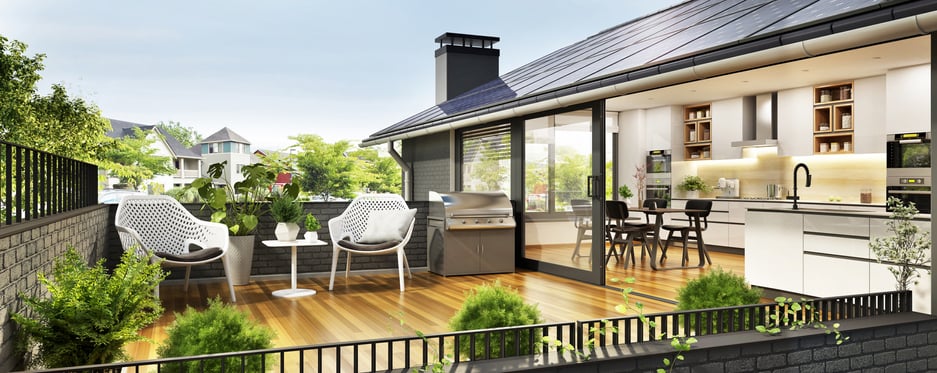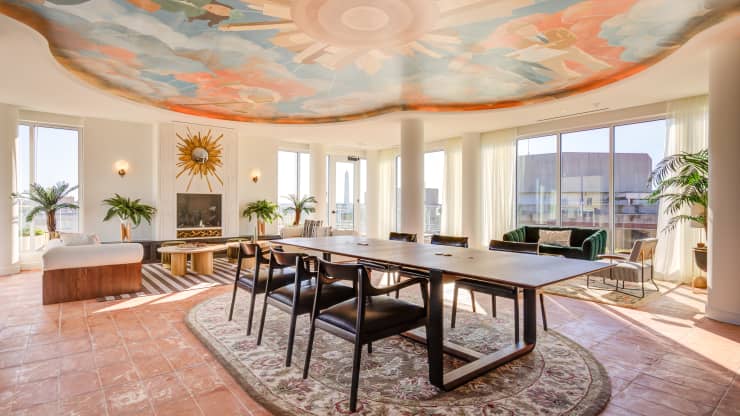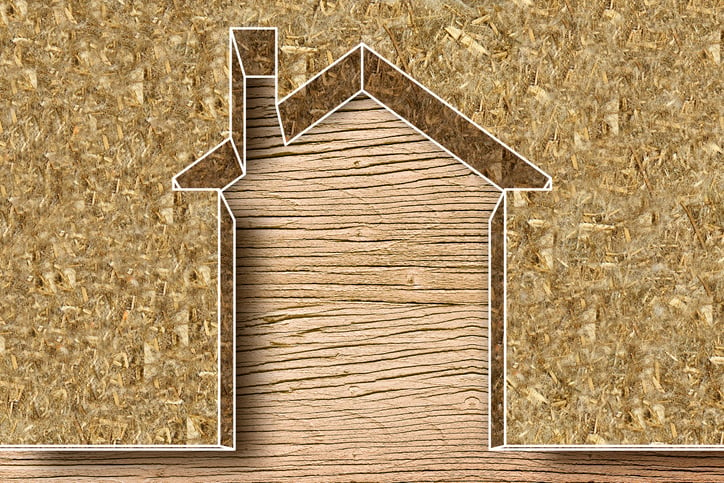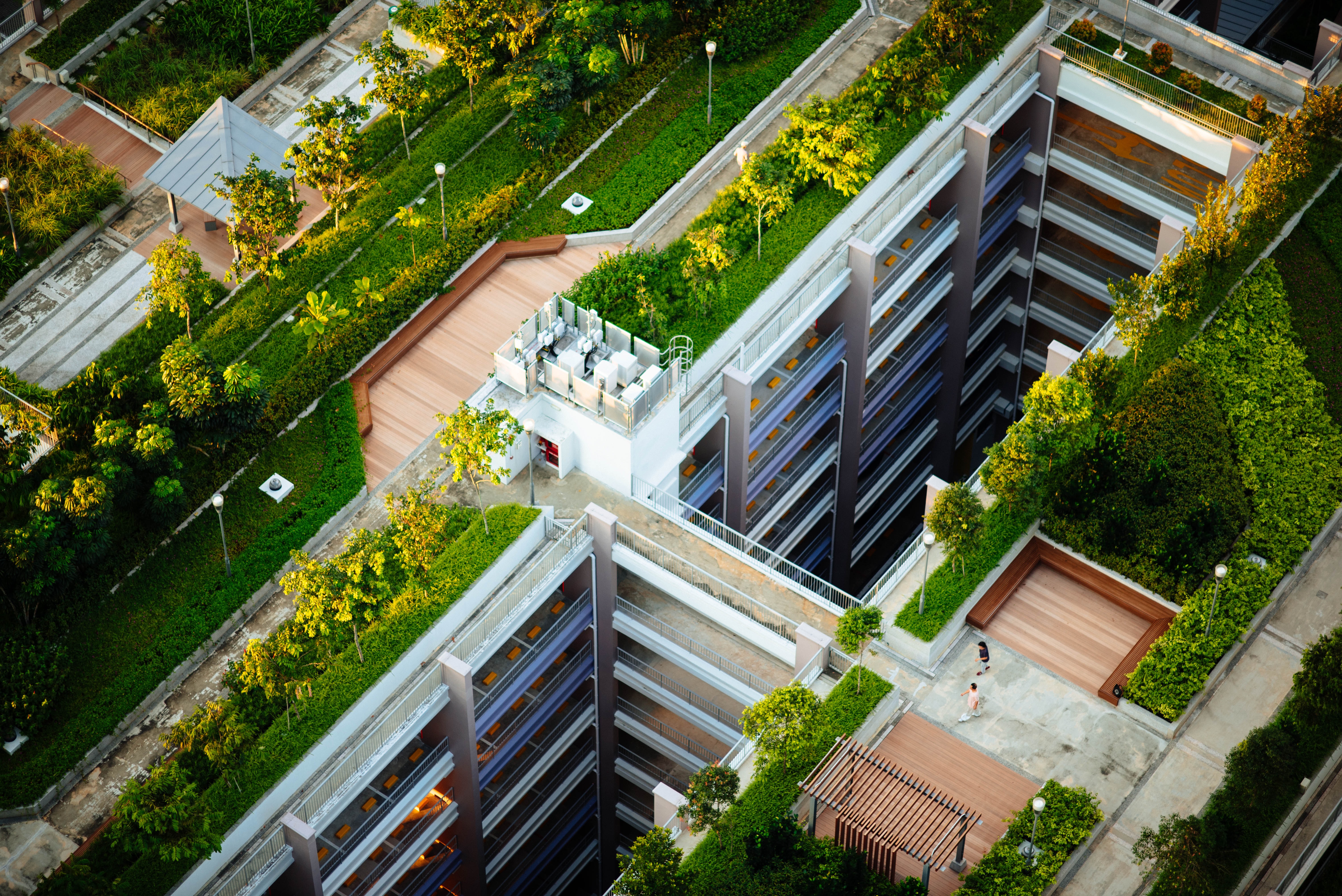
Editorial Note: This article was brought to you courtesy of Rose Morrison, managing editor of Renovated.com.
The construction industry has a significant impact on the environment. Building homes and manufacturing materials releases carbon emissions and uses tons of resources. In fact, it generates 50% of annual carbon dioxide pollution. That's why it's essential to consider making the industry more sustainable.
Architects can play a significant role by advocating for more sustainable practices. Here are 12 ways to get started.
Related Article: Understanding the Importance of Sustainable Construction: Why Going Green Is an Imperative, Not a Design Fad
1. Become Part of the 2030 Commitment
Reducing carbon emissions is an important goal to lessen the impacts of pollution and global warming. Building operations, such as HVAC systems and lighting, consume tons of energy. The Architecture 2030 Challenge aims to have all new buildings be carbon neutral by 2030. AIA has created a program called the 2030 Commitment to help achieve these goals.
The initiative helps companies with their environmental practices and offers support. It even tracks the organization's progress over time. You can then focus on strategies, such as using smart devices to lower energy consumption. Register your firm today through the 2030 Design Data Exchange (DDx).
2. Focus on Existing Buildings
Many builders start by improving energy efficiency within new construction. However, it's also important to figure out how to do this with current buildings, which have a green advantage. New construction and demolition can produce tons of carbon emissions. For example, a new house can generate 50 tons of carbon dioxide, but a renovation may emit only 15 tons.

Start by retrofitting current buildings with energy upgrades. You can replace the roof, add insulation and upgrade to Energy Star-rated appliances. They can even improve a home's resistance to hazards. Switching to durable roofing material like metal can protect against storm damage. Before starting construction, do a vulnerability assessment to ensure the property is not at high risk for wildfires or rising sea levels.
3. Pick the Right Materials
The materials you choose make a big impact on the overall carbon emissions of the project. Select carbon-neutral supplies. Steel and concrete are less eco-friendly and have a larger effect on global warming, and the carbon footprint they leave is known as embodied carbon. The production of these materials accounts for 16% of all carbon dioxide emissions. Aluminum and foam insulation are other materials to limit.

Some projects require steel for construction. Ensure you properly plan how much is needed ahead of time to reduce the release of gases and waste less material. Consider replacing cement with fly ash to make concrete more sustainable, or use alternative supplies if you can.
When choosing materials for your project, aim for materials that are durable and require little maintenance. Additionally, materials that are easily recyclable and have other eco-friendly properties, such as having certifications that guarantee their quality, lacking chemicals that could harm the indoor air quality, and are acquired by sustainable means.
Here are a few sustainable building materials to consider using:
- Rubber
- Stone
- Cob
- Bamboo
- Cork
- Adobe brick
4. Invest in Renewable Energy
Renewable energy reduces carbon emissions and fossil fuel reliance, and these upgrades are becoming more popular. Solar panels for roofs are a popular example. These provide clean energy and reduce homeowners' utility bills. There is a high initial price tag of about $11,144-$14,696, but tax credits and rebates can reduce the cost.

You can also look into other forms of green power, such as wind or geothermal energy. Geothermal heat pumps are an excellent consideration for modern homes.
Another low-cost solution is discussing green energy contracts with clients. This helps homeowners understand what renewables are available and reduces overall carbon production.
Related Article: Sustainable Construction: 5 Ways You Can Make Greener HVAC Systems
5. Reach Out to Government Officials
Support from higher power organizations is needed to combat climate change, so vote for candidates who support the Green New Deal. This describes multiple policies that aim to make a systematic change and was first introduced in 2007 by Pulitzer Prize-winner Thomas Friedman. It emphasizes environmental and social justice and calls for the creation of new jobs. Having elected officials enforce these policies helps speed up climate change progress.

Another step is participating in local government organizations, like community boards and nonprofits. This allows you to propose new solutions and advocate for effective policies, like investing in technology. Plus, it encourages policymakers to consider the contractors who work in the building environment. To get involved in a community board, apply online and be ready to share your ideas.
6. Inspire Positive Attitudes
A key to fighting climate change is people's attitudes. Uniting everyone for a common goal will help reduce carbon emissions. Use your industry knowledge and step outside your comfort zone. Educate lawmakers, clients, taxpayers, and even your neighbors on sustainable practices.

Encourage homeowners to reduce their daily energy usage. This can include things like air-drying clothes or turning off lights when they leave the room. You should also encourage them to vote for officials who support climate initiatives.
During the demolition stage, have clients keep reusable items, like cabinets, to reduce waste. The Green New Deal and the Architecture 2030 create discussions but proposing laws can fuel real change.
7. Use New Technologies
One way to reduce carbon emissions is by introducing new technologies and materials. The rise of smart devices can help lower energy usage. For example, a smart thermostat can automatically lower temperatures when a resident is away. The technology keeps the home at a constant temperature, making it more comfortable.
Other technologies, like project management software, can help with scheduling and ordering materials. It improves communication among team members to reduce costly errors. It can also more accurately predict material estimates, preventing waste.
Newer technologies are coming to the market, like augmented reality. This helps architects visualize their plans and better see how everything will fit into place. They can then create more effective blueprints and recognize environmental hazards.
Here are a few more technologies to consider implementing:
8. Repurpose Buildings
New construction can waste tons of energy and resources. Therefore, consider how to reuse older buildings and give them another life. The focus of this approach is on interior design. Consider altering a structure's layout for a new use instead of just tearing it down. This reduces waste and lowers overall greenhouse gas emissions. For example, a California College of the Arts in San Francisco turned a bus maintenance facility into an open studio.

Pictured: The Wray in Washington, D.C., a repurposed office building turned luxury apartment building. Image Source: The Wray
Another adaptive strategy is transforming office buildings. Due to the pandemic, about 59% of people work remotely. As a result, unused offices are being turned into residential properties. Remember, imagining how you can repurpose a building over its life span is critical during development.
9. Build for Climate Resistance
Global warming has affected the environment, from rising sea levels to increased wildfires. Many people may assume we must create buildings protecting against these elements, but a smarter strategy is to learn how to adapt to them. Instead of building sea walls in coastal areas, create solutions to live with higher sea levels, like placing homes on stilts. In addition, put electrical systems, such as the HVAC unit, on upper levels.

Another option is to build homes that can burn and regrow in areas prone to wildfire. Build with fire-rated solid materials, like standing seam, tile, or slate. Detach the garage to slow down the spread if a fire occurs.
10. Require Insulation on All Projects
Insulation can help maintain a constant interior temperature. This reduces the overuse of energy-consuming appliances like air conditioners. Insulation can also lower homeowners' bills and prevent drafts in the winter. Sealing windows with caulk or weatherstripping makes the insulation more effective.

Another tip is installing an open rain screen, which allows air to vent through the siding, keeping hot or cold air from passing through the insulation. This method uses wood siding and an outer layer, creating a wall cavity. The structure also includes an open joint to allow for ventilation.
11. Create More Outdoor Community Spaces
Sustainable practices can include raising awareness about the beauty of nature. Outdoor spaces allow residents to connect with plants and animals, and having a greater appreciation encourages them to live more sustainably. Outside areas even increase people's moods and are good for physical health.

Incorporate these types of rooms in your projects. For example, you could suggest a homeowner adds a sunroom or expands their backyard. Designers can encourage clients to decorate with colorful flowers and use larger windows. Wooden decks are another option to elevate outdoor spaces.
12. Enhance Rooftop Spaces
A rooftop is one of the more undetailed spaces when designing a building. However, this valuable square footage can serve more purposes than just keeping the elements out. Construct a flat roof and add a deck and green area.

This allows for a space to socialize and encourages a sense of community. The plants absorb the sunlight and carbon dioxide to keep the building cool and decrease air pollution. Make the rooftop even more fun by adding lighting and comfortable seating.
Related Article: How Green Roofs Can Help Cities Fight Climate Change
How to Create an Eco-Friendly Building Industry
Designing homes takes careful planning. One thing to consider is the impact on the environment. New construction adds to overall carbon emissions, energy consumption, and waste of materials. Architects can be great advocates for change.
You can incorporate sustainable materials, repurpose items, and reach out to elected officials. Consider these eco-friendly strategies for your next project to reduce carbon emissions and conserve materials for future generations.
This is a guest post written by Rose Morrison, managing editor of Renovated.com